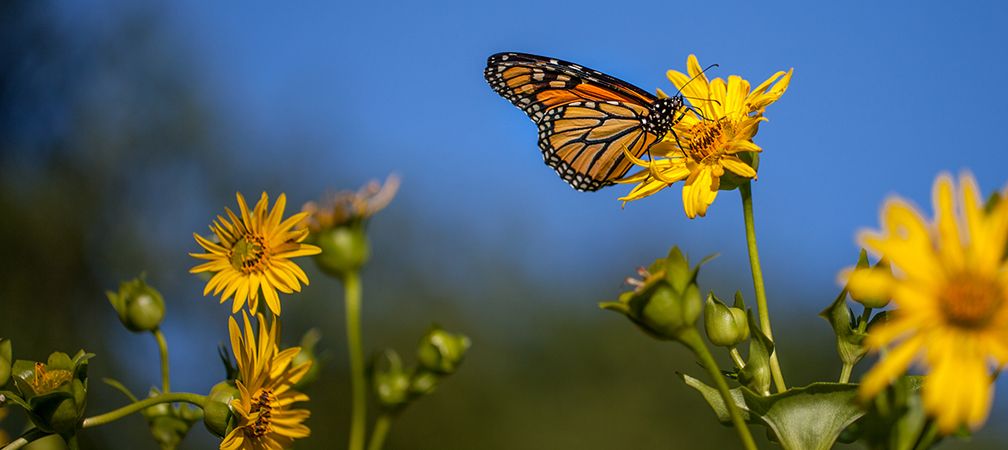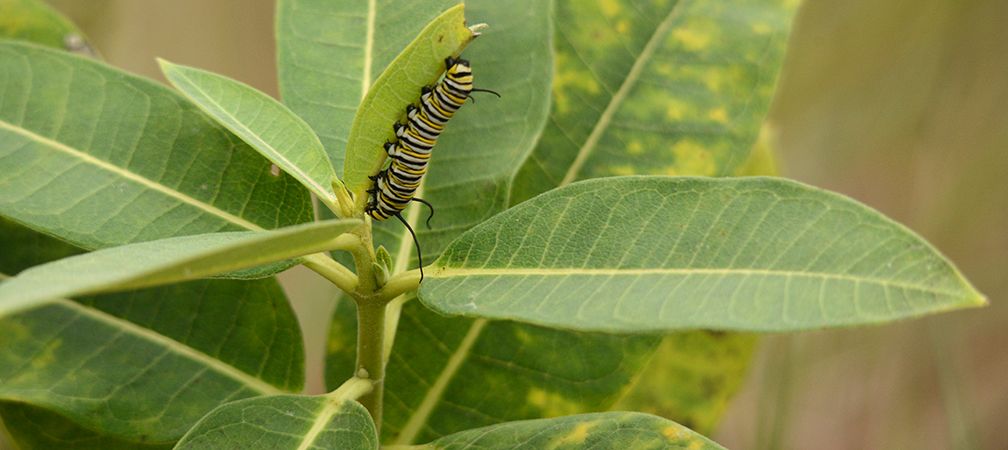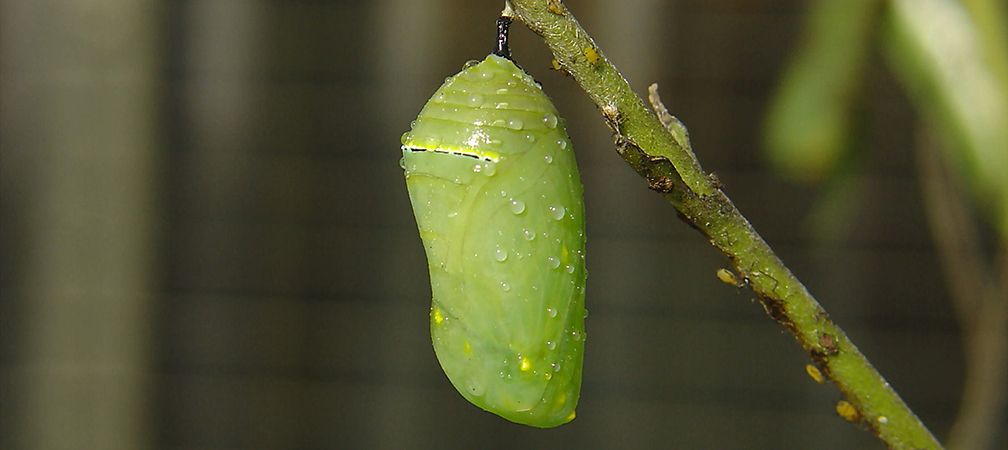Ontario Nature Blog
Receive email alerts about breaking conservation
and environmental news.
© Lora Denis
Monarch butterfly on Spotted Joe-pyeweed © Bill McDonald
As spring unfolds and summer draws nearer, many migratory species are making their way back to Ontario. One such species is the iconic monarch butterfly. Their long journey is a multi-generational undertaking: while it typically takes only one generation to make the southward journey in fall, it takes several generations for monarchs to make their way back to their breeding sites in the spring. Read on to find out commonly asked questions and answers about this beautiful species.
Monarch butterflies can be found throughout southern Ontario, typically between late May or early June and mid to late September. The monarch population in Ontario represents one of two subpopulations with different migratory routes. The group present in Ontario travels between overwintering sites in central Mexico and breeding sites across the eastern US and southern Canada. Another group migrates between overwintering sites along the Pacific coast in California and breeding sites in the US and Canada west of the Rocky Mountains.

Sadly, fewer and fewer butterflies are making their way back to our gardens each year, as decades of declining numbers reveal a precarious situation for the monarch. The direct threats to monarchs involve habitat destruction in their overwintering sites in the Oyamel Fir forests of central Mexico, but they face a myriad of threats throughout their breeding sites in the United States and Canada as well.
A 2016 assessment by the Committee on the Status of Endangered Wildlife in Canada listed monarchs as Endangered and in December 2023, they were officially uplisted from Special Concern to Endangered under the federal government’s Species at Risk Act. In Ontario, however, which represents approximately 19% of the Canadian population, monarchs are listed only as Special Concern. This means that while harming or collecting monarchs on federal land is prohibited, the species is offered no provincial protection for the individuals or their habitat.

There are several ways we can all help monarchs. One of the best things you can do is provide them with food by planting native plants. Monarch butterflies lay their eggs on milkweed, which is the sole food source for caterpillars. Adult butterflies depend on native wildflowers for nectar, so adding these to your garden can provide them with a food source too. Gardens full of native plants are not only more ecologically friendly, but also require less water and maintenance than traditional grass lawns.
You’ve likely heard of the lethal effects neonicotinoids can have on bees, but these pesticides are dangerous to monarchs too. A 2021 study by the University of Guelph found that milkweed planted near neonicotinoid-treated crops were linked to reduced survival rates for butterflies. While Health Canada has some risk mitigation measures in place, continued advocacy for tighter restrictions is crucial for protecting monarchs and other pollinators.
After feeding on milkweed, growing, and molting for about 9-15 days, the monarch caterpillar pupates and becomes a chrysalis. Another 9-14 days later, a fully developed adult butterfly will emerge.

Rearing monarch caterpillars may seem like a good way to help protect them, but capturing and rearing is prohibited without a permit from the Ministry of Natural Resources and Forestry. Instead, consider planting milkweed in your garden to attract monarchs, but leave them be and delight in being able to witness their fascinating life cycle. However, if you’re still interested in rearing caterpillars, you can join the Toronto Entomological Association (TEA) and request to be added as an assistant under TEA’s permit.
You can also help monarchs by participating in a community science effort led by the David Suzuki Foundation called Butterflies in My Backyard. To join please fill out the application form by April 12, 2024.
Keep a lookout for monarchs as they make their way back to Ontario this spring, and learn more about our campaign to protect pollinators here: ontarionature.org/pollinators

Gananoque Lake Nature Reserve © Smera Sukumar
I have an orange flowering milkweed in my garden. I read recently that I should remove the first blossoms, so that the second blooming is timed right for monarchs. Is this true?
Hello,
There is no real need to remove milkweed blossoms because other pollinators such as, importantly, bees and other butterflies will visit and make use of the butterfly milkweed flowers. In the migration process, monarch butterflies would visit the milkweed and, as possible, will make use of it as a host plant.
Noah C.
I think the worst thing you can say, is for people to stop buying Avocados from Mexico. Farmers follow government laws in Mexico for pesticides. They must be approved. They are super foods that save people’s lives. Butterflies will adapt.
Hi John. That’s correct, common milkweed was removed from the Noxious Weed list in 2014, but it isn’t considered a species at risk and has no formal protection. In fact, of the several species of milkweed native to the province, only one is on Ontario’s Species at Risk list: four-leaved milkweed which is listed as endangered. Certainly more protections for common milkweed and other milkweed species would benefit monarchs, considering how crucial they are and the loss due to agricultural practices and development.
You’re right about common milkweed being a pretty aggressive spreader too, so a different species might be a better option, especially for smaller gardens. I found a handy guide to the different native milkweed species and how much sun and moisture they each prefer, hopefully it’s helpful for determining which species might be best suited for your garden if you’re interested in planting some: https://www.inournature.ca/milkweeds-for-ontario-gardens
It seems to me one of the best ways for Ontarians/Canadians to help monarch butterflies is to stop buying avocados coming from Mexico since the cause of habitat destruction of their overwintering sites in the Oyamel fir forests is entirely related to land clearing in order to grow avocados!! People don’t realize this so we need to raise awareness. I saw the documentary while vacationing in New Zealand and it sent chills down my spine to see an environmentalist knee-deep in dead monarchs due to avocado farming 😭
What is the current status of Common Milkweed in Ontario? I’m pretty sure that it is no longer classified as a “noxious weed” by the government, which is good. But with the large number of milkweed plants lost to agricultural practices and suburban development every year, is it (or should it be) — given its importance to the Monarch Butterfly’s life cycle — considered a threatened species deserving of official protection?
Also, my understanding is that Common Milkweed has a tendency to spread. Is it recommended for backyard gardens if one wishes to help the Monarch Butterfly?